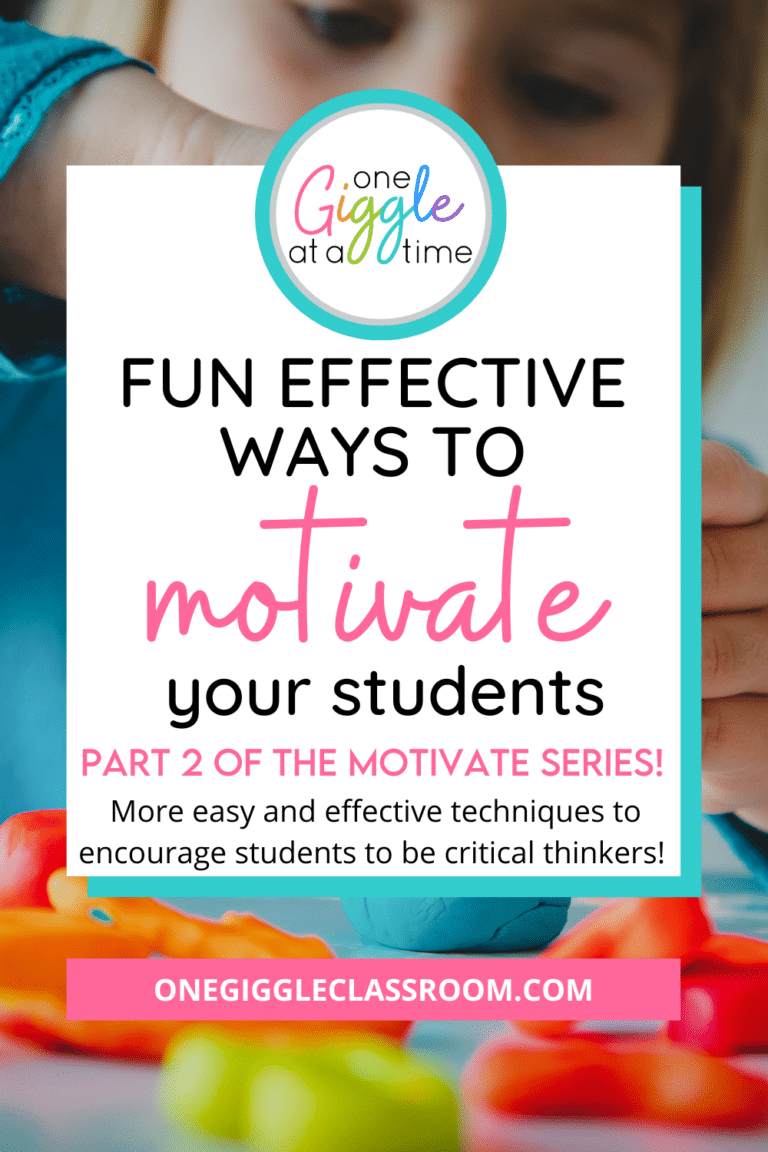
4 POWERFUL Ways to Empower English Language Learners Through Vocabulary Instruction
Share This:

Fostering an inclusive learning environment where every student feels valued and supported is of utmost importance! This can be especially challenging when you have English Language Learners (ELLs) in your classroom. Empower English Language Learners through effective vocabulary instruction while you also invest in creating a positive classroom community for all!
Understanding English Language Learners (ELLs)
English Language Learners are students who are in the process of acquiring English proficiency. Recent data from the National Center for Education Statistics reports that approximately 10.3% of all students in the US are classified as ELLs.

The Department of Education reports that these students speak a wide variety of languages at home, including:
- Spanish
- Arabic
- Chinese
- Vietnamese
- Hmong
- & more
These students bring rich linguistic backgrounds and cultural diversity to the classroom. However, they often encounter challenges in English-speaking environments that teachers must be aware of.
Common Challenges ELLs Experience
- Vocabulary Acquisition
- Language Fluency
- Cultural Adjustment
Vocabulary Acquisition
English-Language Learners may struggle to grasp new English words and phrases. This will negatively impact their ability to comprehend what’s being taught. Poor vocabulary acquisition also negatively affects communication skills.

Language Fluency
Developing fluency in the English language, both in speaking and writing, is often a gradual process for ELLs.
When students have difficulty understanding what’s going on around them and expressing their thoughts, they will likely experience negative social and emotional impacts too.
Cultural Adjustment
Adjusting to a new language and cultural norms within the classroom setting can also be overwhelming for ELLs. This can affect their confidence and sense of belonging.
Empower English Language Learners through Vocabulary Acquisition
Providing effective vocabulary instruction should be one of your first considerations when you find yourself teaching English-language learners. Improving vocabulary acquisition skills can significantly improve all learning outcomes for these students!

Instruction doesn’t need to be super complex or time-consuming though! Consider these practical ways to empower your ELLs through vocabulary acquisition:
- Contextual Learning
- Word of the Day
- Social Skills Stories
- Interactive Games
*This post contains some affiliate links. As an Amazon Associate, I earn from qualifying purchases.
Contextual Learning
As much as you can, intentionally provide opportunities for ELLs to encounter new words in the context of everyday life.

Use real objects, books, videos, and real-life scenarios to illustrate word meanings and help students understand how to use them.
Real Pictures & Example Sentences
Seeing a word represented in a real-life image is extremely helpful for contextual learning too! This helps ELLs connect vocabulary to objects, actions, or situations they are already familiar with or will likely encounter in the future. Real pictures aid in increased comprehension and retention and bridge the gap between existing knowledge and new vocabulary. This makes learning more relatable and enjoyable!
With each word in the Academic Tier 2 Core Vocabulary Set, an example sentence is provided as well. Example sentences show ELLs how the vocabulary word functions in everyday language. Students are able to see exactly how to use new words in context— improving grammar, sentence structure, and conversational skills!
When children see new vocabulary words in action through real photographs and sentences, they are able to use the words more accurately (& confidently!). It moves them from memorization to practical application!
Word of the Day
Make learning interactive and enjoyable by incorporating engaging activities like the Word of the Day Vocabulary Pictures Activities Set. This resource includes REAL photographs with example sentences to keep learning meaningful.

This resource will help you to consistently empower English Language Learners through rich daily academic vocabulary lessons. It includes 527 different vocabulary words with accompanying lessons and activities for you to use throughout the entire school year.
Always, always consider your students and their unique needs. Choose to use this as a Word of the Day or Word of the Week activity. Be confident that your ELLs are building important academic Tier 2 core vocabulary to grow reading, speaking, and writing skills along the way!
Social Skills Stories
You can utilize social skills stories to reinforce vocabulary retention and empower English Language Learners also. These are great ways to teach abstract concepts like social-emotional skills such as sharing, feelings, and self-control.
Interactive Games
Incorporating games like Hedbanz, Zingo!, or Match It: Spelling is another fun way to support vocabulary acquisition. These games also build early reading skills, letter recognition, and more!
Interactive games can be played in small groups or one-on-one interventions with you and your English Language Learner.
Offer Continued Support in Other Ways
Continue to support your ELLs by considering the ways you work to build a positive classroom community for all students. These steps will help your students regain confidence and establish a sense of belonging.
Cultural Celebrations
Embrace and celebrate the cultural diversity within your classroom! Ask your students what holidays, activities, and experiences mean the most to them and their families. Consider adding some of them to your school year to recognize the importance your ELL student brings to your classroom community.
Talk about how the experiences are similar and different from those of your English-speaking students. Help students realize that they are likely more alike than they realize!
Peer Support
Next, encourage peer interaction and collaboration by pairing ELLs with English-speaking peers for language practice and support.
You can do this during read-aloud times by having native English speakers read aloud as ELLs listen and follow along.

Students can also provide peer support during partner activities or small group work.
Responsive Teaching
Tailor your teaching to accommodate the diverse learning needs of your ELLs. Remember to incorporate additional levels of support and differentiate assignments as needed.
School Resources
Finally, you can maximize the support you give your ELL students by reaching beyond your classroom walls to your school community. Collaborate with ESL specialists, school counselors, and language support staff to provide targeted interventions and resources for ELLs and their families.
As you prioritize vocabulary instruction and creating a positive and inclusive classroom community, you will empower English Language Learners both academically and socially. Your engaging teaching strategies and collaboration with other school staff will ensure that each one of your students feels supported and included in their unique learning processes. Everyone deserves to feel valued and embraced, and you play an important role in that process!
Let me know if you have any questions about anything you see here. Don’t forget to pin this post to refer to it later!

Other posts you may enjoy:
How Social Skills Stories Build the Positive Classroom Climate You Are Craving
5 EASY Techniques to Teach Fairness and Respect While Building a Positive Classroom Community
6 ENGAGING Activities to Build Strong Vocabulary in Elementary-Aged Students
MAKE COMPREHENSION INTERACTIVE AND FUN!
Retelling Bookmarks
This FREEBIE is going to change the way your students spend their “after reading” time!


Diane Romo
Thank you for being here! I love sharing ideas with other teachers! If you are looking to enhance your teaching and build a positive classroom community, you have come to the right place!





















